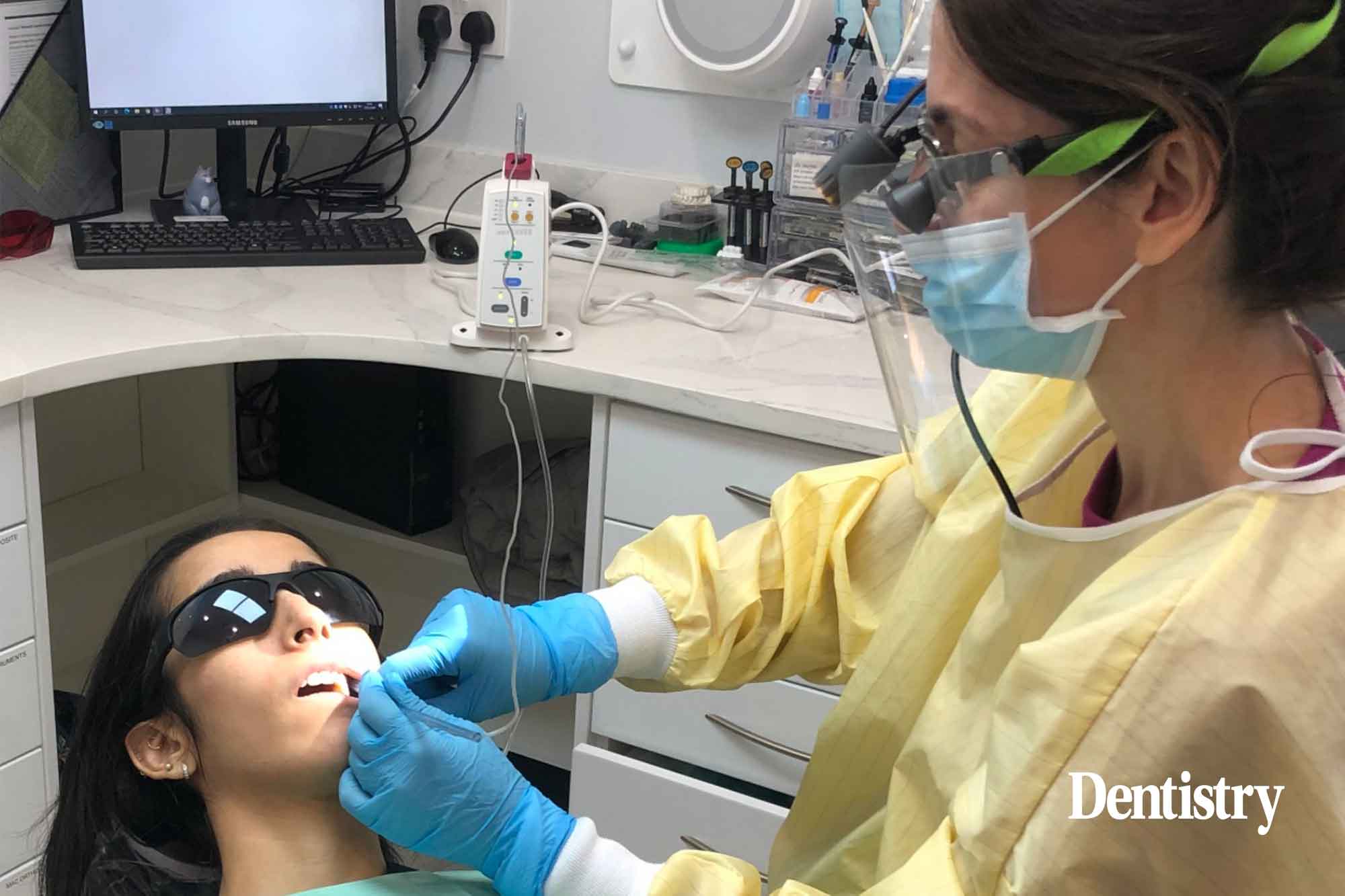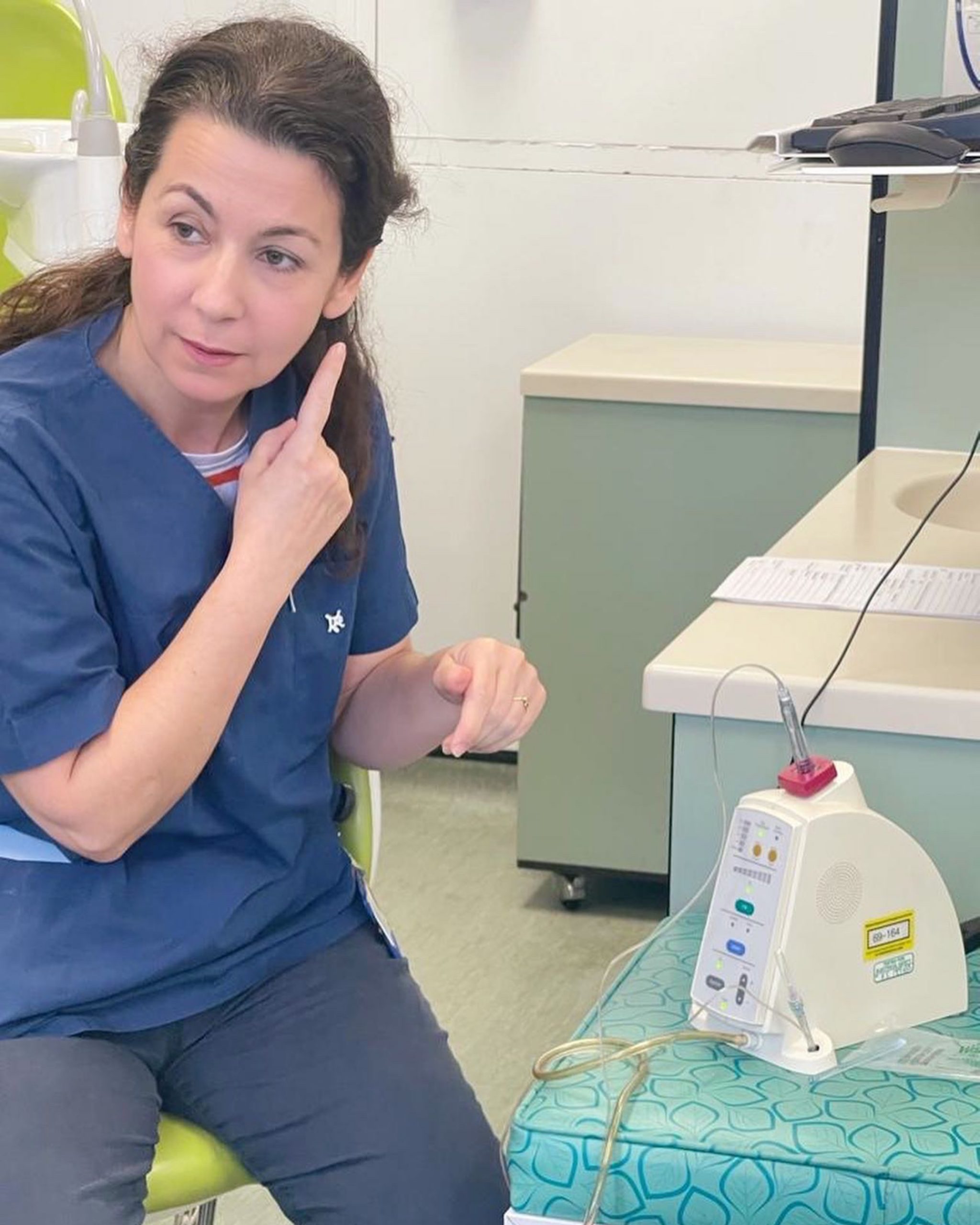
It is often said that those with the broadest shoulders should bear the greatest burden. And if paediatric dentist, Dr Makbule Sipahi Ogretme, is struggling with the pressures of ensuring a dentally fit adult population for the future, she’s not showing it.
Arming the dentists of tomorrow with the skillset to reverse the alarming oral health statistics falls within her remit as a clinical dental tutor.
A general dental practitioner with a PhD degree in paediatric dentistry, she practises at Dencare Clinic in Locksbottom, Orpington, Kent.
Known as Dr Mac, she is also a part-time clinical tutor at King’s College Dental Institute where she has trained and supervised dental undergraduate students in a paediatric setting since 2011.
With a long-term passion for children’s dentistry, she contributed to the paper What preventive care do sedated children with caries referred to specialist services need? that reported on the oral health education and preventive treatment required to support conscious sedation care pathways.
The paper found that ‘a dental system that focuses on preventive rather than curative treatment could lead to significant economic savings’.
Back on track
It makes for a sobering read when you consider the latest statistics. According to Public Health England, tooth decay is the leading reason for hospital admissions among five to nine-year-olds, with around one-in-four (23%) of five-year-olds having dental decay.
In September this year, during the brief premiership of Liz Truss, the British Society of Paediatric Dentistry published a blueprint to direct health ministers towards getting paediatric dentistry back on track using evidence-based methods.

The 10 point plan includes:
- A demand that every child and young person should have a ‘dental home’
- Dental teams should be able to deliver a Dental Check by One (DCby1) before a child’s first birthday
- Raising awareness of the support needed for vulnerable groups, such as asylum-seeking children, looked-after children and those in poverty, with an expansion of supervised toothbrushing schemes in early years settings, community water fluoridation and increasing free school meal availability
- A drive to an equitable recovery of general anaesthetic (GA) services
- An expansion of the paediatric dental workforce.
In her dual roles as practitioner and tutor, Dr Mac recognises the challenges in delivering dentistry to a young cohort.
They include pre-cooperative children and parents uncommitted to the oral hygiene and dietary advice. It is an uphill struggle and a hill Dr Mac is prepared to die on.
Positive reinforcement
Building a ‘dental home’, she says, takes time.
‘Dentistry is often associated with pain and discomfort and children should not associate the dentist or the dental environment with the concept of threat. It is our responsibility to create a child- and parent-friendly atmosphere.
‘Behaviour management is a key factor in establishing good rapport. It is important to speak in a language that children understand – we call it “childrenese”. ‘The language is much simpler to grasp the outline of a planned treatment. For instance, rather than “an injection will be applied to your gum to stop the pain”, I will say “your tooth will be put to a peaceful sleep whilst we make your mouth much healthier”.
‘Positive reinforcement is also important. We should praise every effort to cooperate and we should never rush an appointment. We take one step at a time – get into a conversation about a hobby or favourite things to do as this generally helps them feel comfortable.’
Raise awareness
When treating high caries risk paediatric patients, it is imperative to share all treatment options with patients and their parents/carers to ensure informed consent. It should include the options for anaesthetic and sedation.
‘Parents and patients should be aware of all the available treatment options to make an informed decision. If the treatment involves anaesthesia/sedation, I give details in the plan.’
‘The concept of ‘tell me and I will forget, show me and I may remember; involve me and I will understand,’ is one Dr Mac embraces with her students and includes the administration of anaesthetic.
As a clinical tutor, she sees it as part of her role to raise awareness of new technologies that help deliver comfortable and optimum dental care.
‘Any technological advancement that makes dentistry more effective and efficient has a place. An increased success rate in treatment is just one of many advantages. A dental student must appreciate all technologies available to them and know how and when to use them.’
Pain-free alternative
Anaesthesia is a major consideration in paediatric dentistry. Dr Mac is a keen advocate of The Wand – a computerised system that gives clinicians full control of anaesthetic administration, which she believes is reassuring, particularly for children.
‘It’s ideal for treating paediatric patients,’ she says. ‘It is a pain-free alternative to the traditional dental injection, offering targeted delivery – ideal for small mouths. It ensures great patient comfort and wears off quickly.’
And she is keen for her dental students to understand the benefits. She recently shared a post on Instagram, extolling its virtues. ‘One sound I like the most is the sound of The Wand. Although it was not our seminar subject today, my students wanted to know about The Wand. I was more than happy to show them. I cannot think of dentistry without one,’ she wrote.
She explains: ‘Our students learn about pain relief and local anaesthesia. Even though we talk about The Wand in our presentations, seeing it live makes it worthwhile. It is not something they would come across in every practice, so it is a real treat for them to see – and feel – how it works.’

Everyday essential
So does The Wand have a part to play in supporting preventive education and ensuring behaviour change?
For Dr Mac, it is an everyday essential.
‘The Wand is part of my dentistry. It is useful in eliminating the most common fear: the injection. Patients return when their experience is not painful, and The Wand is a fantastic tool for achieving this. It is my must-have with paediatric patients. They are never aware I am injecting them.’
She concedes it has yet to replace more traditional anaesthesia for some treatments. But maintains it can be an adjunct to treatment.
‘In situations where multiple teeth need treatment and cooperation is extremely poor, there is no alternative to sedation or general anaesthetic.
‘However, The Wand can help avoid sedation if the biggest fear is about the injection. Orthodontic extractions are a good example. We use inhalation sedation for children when needed. When combined with The Wand, the outcome is greatly improved.’
Ultimately, her approach to dentistry is all about focusing on the comfort of her young patient in the chair.
‘The biggest reward as a paediatric dentist is helping children out of pain, restoring their oral health and giving them a healthy smile, which leads to a positive attitude towards dentistry. The best gift for me is witnessing how a child patient of mine turns into a confident adult patient over the years.’
Email [email protected] for references.
For more information visit www.dentalsky.com.


